TNC’s Palmyra Atoll Preserve lies some 1000 miles southeast of Hawaii, six degrees north of the equator in the broad swath of ocean known as the Central Pacific. The history of the island is the story of human intervention and change. From lasting marks left by the U.S. Navy in the early part of the twentieth century to the legacy of copra farming, Palmyra is a place of contrast and opportunity.
Purchased by The Nature Conservancy in 2000, Palmyra with its wrecked lagoon, damaged rainforests and pristine coral reefs is, and has been, a focal point for scientists from the world’s leading research institutions, and the atoll itself played a key role in inspiring the creation of the Pacific Remote Islands Marine National Monument in 2008.
Today, Palmyra is a TNC preserve within a U.S. Fish and Wildlife Service (USFWS) National Wildlife Refuge and further protected—out to 50 nautical miles—by the national monument, the largest collection of ocean and islands protected under a single jurisdiction in the world. All of that makes TNC’s Climate Adaptation + Resilience Lab (CA+RL) at Palmyra Atoll an ideal testing ground for nature-based solutions designed to restore and protect the health of island ecosystems far beyond Palmyra.
To that end, TNC is working with partners, including the USFWS, to derive lessons and best practices to maximize Palmyra’s resilience in the face of climate change by eradicating black rats, realigning the native rainforest, and reintroducing endangered bird species.
I recently caught up with Alex Wegmann, Palmyra Science Director, for an update on the status of conservation work at Palmyra, and its focus on enhancing the atoll’s resilience to climate change and demonstrating a climate adaptation management approach that can be replicated on other low-lying atolls and islands throughout Oceania.
Alex Wegmann
Palmyra Science Director
Alex Wegmann, Ph.D is the current Science Director for the Nature Conservancy’s (TNC) Palmyra Program and TNC’s Climate Adaptation + Resilience Laboratory at Palmyra Atoll. As Director of TNC’s Palmyra Program (2016-2019), Alex led the creation of a new vision and strategic direction for the program, including revised staffing, performance management, financial, and operational models. During a decade of conservation program management at Island Conservation, Alex also led 11 multi-year conservation projects in five countries and three U.S territories, many of them public-private partnerships involving local communities, while innovating new solutions to conservation challenges.
Q: You’ve described the Conservancy’s Palmyra Atoll Rainforest Realignment Project (PARP) as a three-phase project: rat eradication, rainforest realignment, and restoration of native bird populations. Let’s take the phases one at a time. I know the rats have been eradicated for some time. What’s happening with the rainforest and the birds?
Wegmann: Getting rid of the rats was a huge undertaking that is making the other two phases of the project possible. But I need to be clear that we’re not restoring Palmyra’s pre-contact rainforest.
This is a realignment of the forest, not a restoration. There’s no solid record of what the pre-contact rainforest looked like here. So what we’re doing – in partnership with US Fish and Wildlife Service, which has really taken the lead on it – is removing about 2 million coconut palms, including adults and seedlings, that have over-run the atoll and crowded out existing rainforest trees. We’re targeting two primary species for restoration on the atoll: Pisonia grandis and Heliotropium foertherianum, but we’re not evenly reestablishing the full complement of Palmyra’s native rainforest tree species, which is why we call it a realignment instead of a restoration.
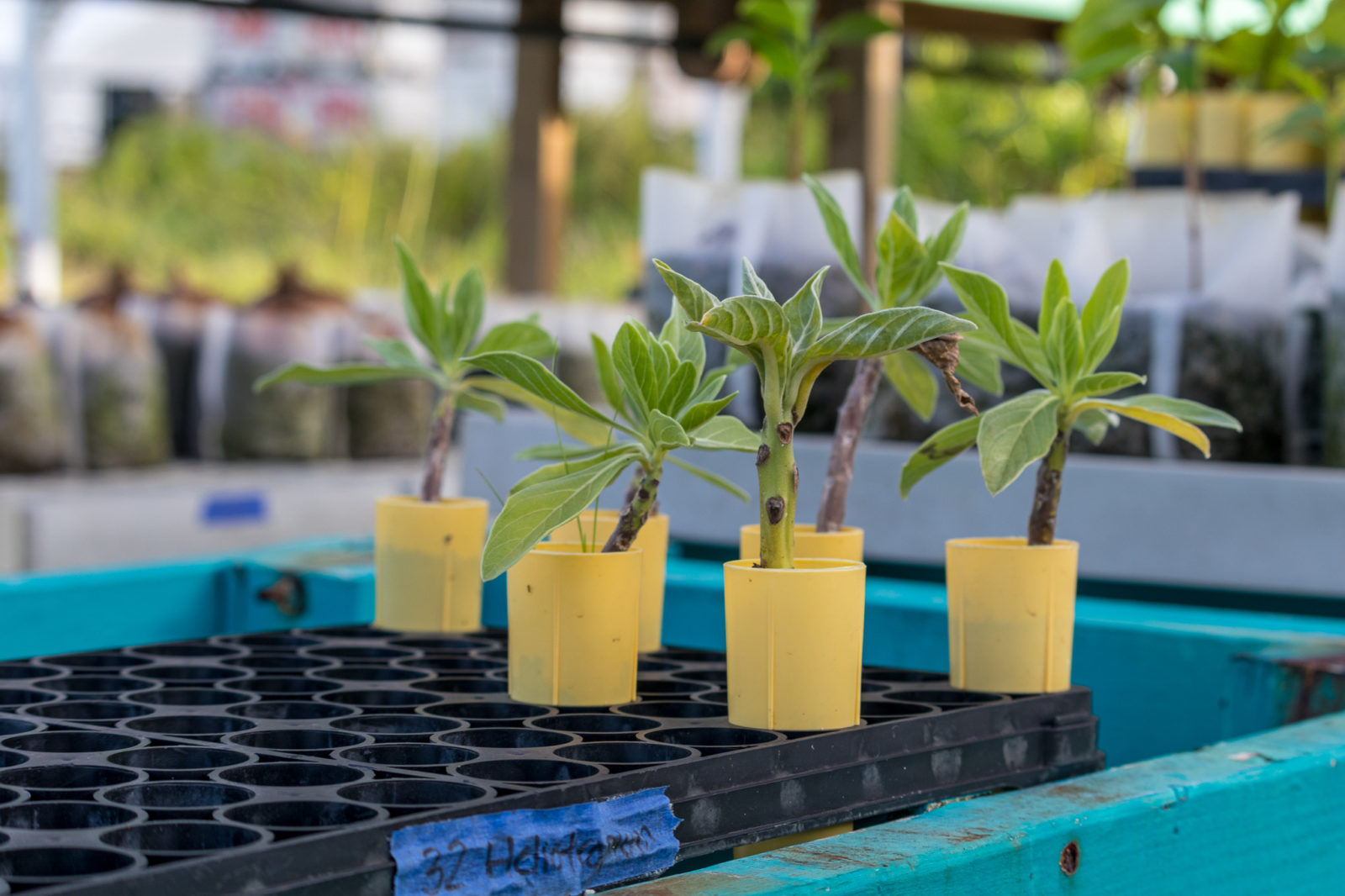
Q: Why is a forest realignment necessary? I found it a little surprising that TNC is removing coconut palms from a Pacific Island – especially since I always thought of coconut palms as a kind of the poster tree for tropical islands. Why is having too many of them on Palmyra a problem?
Wegmann: The short answer is that having too many coconut palms on Palmyra is a problem because native seabirds, like red-footed boobies and great frigatebirds, the two species representing most of the seabird biomass at Palmyra, don’t nest in them.
The longer answer is that in the Pacific, the coconut palm is the tree of life and its cultural and economic importance can’t be over-stated. That said, if the population of coconut palms gets too large, like it has at Palmyra, the palms become a kind of monoculture that unbalances the entire island ecosystem. Palmyra’s rainforest and surrounding coral reefs are dependent on each other and it’s the seabirds that use the rainforest trees – really, their guano, their poop – that is the conduit between the land and water. It’s the nutrient cycle, Pacific-island style: birds nesting in rainforest trees deposit nutrient-rich poop in the soil and those nutrients are then flushed into the ocean by rain and help keep Palmyra’s coral reefs healthy and resilient to challenges like climate change.
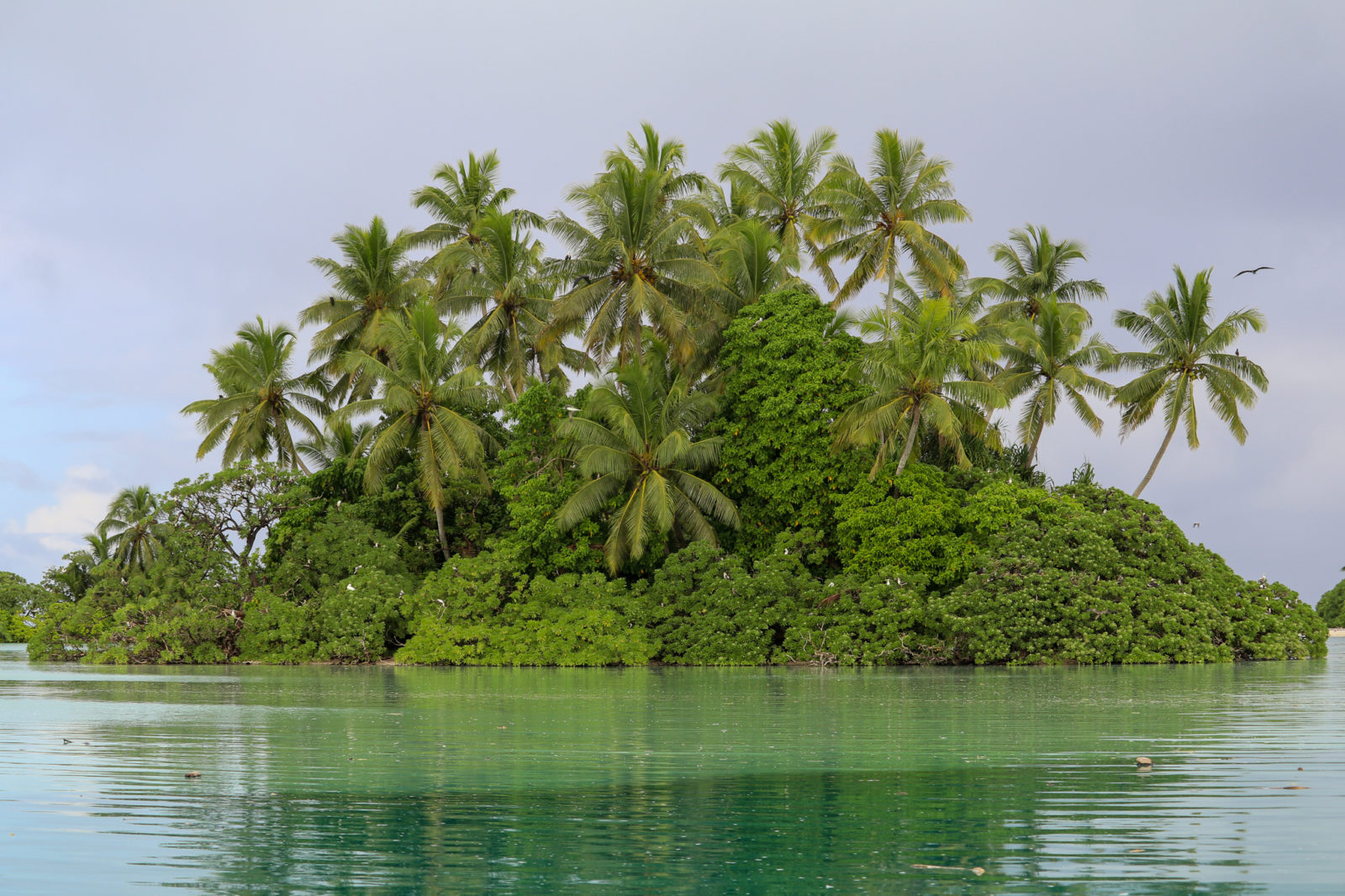
Q: So the reefs need the birds and the birds need trees that aren’t coconut palms?
Wegmann: Yes, exactly. But PARP is ultimately about the resilience of the whole ecosystem – not just creating better habitat for seabirds. The seabirds are going to benefit from having an overall more productive system at Palmyra. So you can think of the birds as both a conservation target and a conservation partner here. We’re working with them to maximize their poop, their contribution, so to speak, to the atoll ecosystem.
The corals on the reefs pull nutrients out of the water. Healthy coral reefs are important for healthy fisheries and the fish, in turn, feed the seabirds. And now that Palmyra is rat free, we’re also working on attracting more sea birds, especially ground-nesting species like wedge-tailed shearwaters and Phoenix petrels, that were extirpated from the atoll by rat predation.
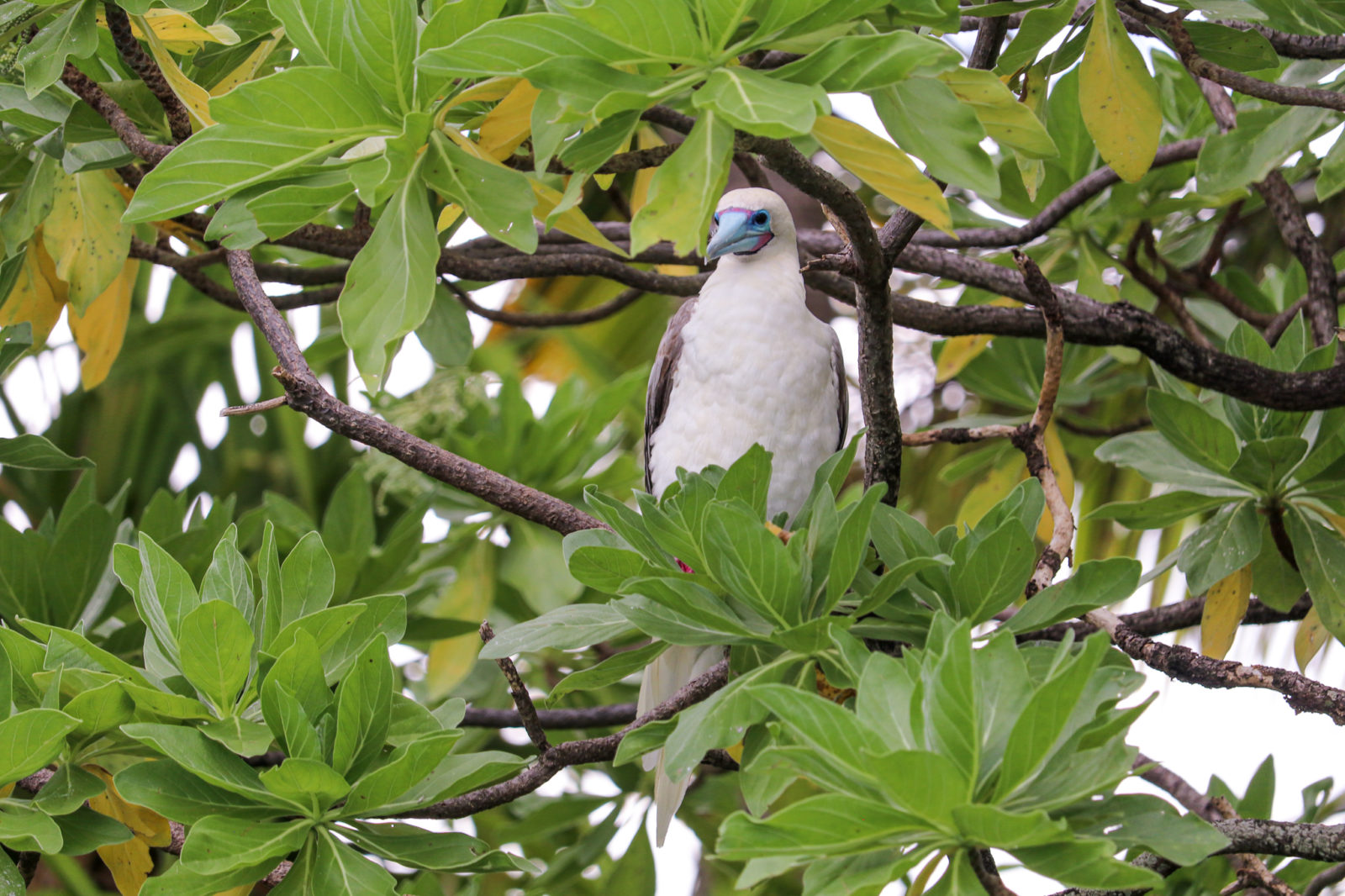
Q: How’s that going?
Wegmann: Well, we’re in the beginning of attracting extirpated species back to Palmyra. Our first step has been to put out seabird callers. We have two of them that set up on our preserve – they’re pretty simple, a the solar panel battery, a tiny little computer in a Pelican case hooked up the two big megaphone speakers broadcasting seabird mating calls for tropical shearwaters, wedge-tailed shearwaters, Phoenix petrels and white-throated storm petrels 24/7. We see these species offshore and the hope is that calls will lure them into Palmyra on a faster timeline than if we just waited for them to find their way here on their own.
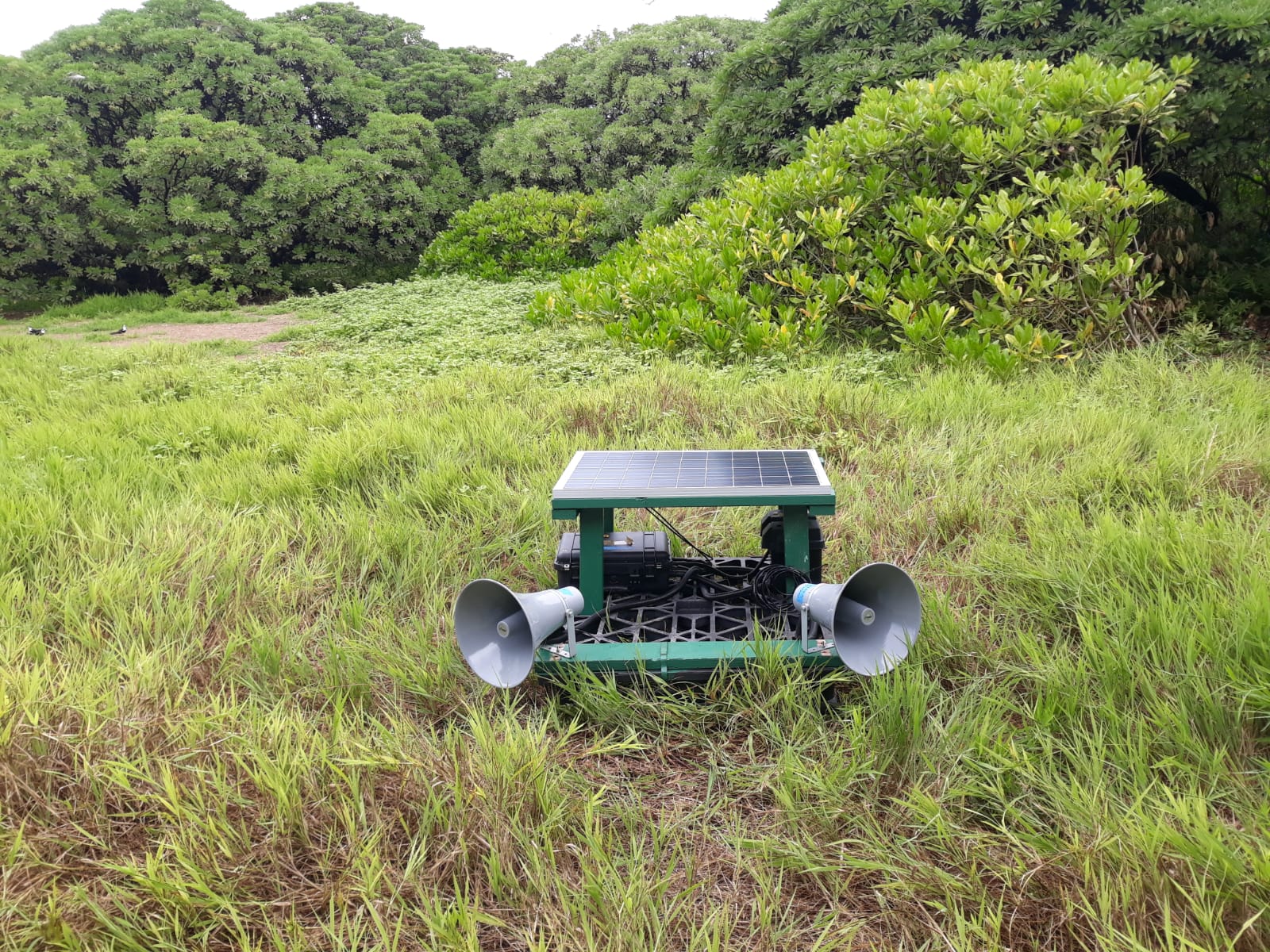
Q: TNC established the Climate Adaptation + Resilience Lab at Palmyra a couple of years ago to help amplify this kind of work to other places around the world struggling with the challenges of climate change. How do you see PARP contributing to those wider goals?
Wegmann: To answer in one sentence, we feel like there is significant potential here for PARP – this kind of conservation intervention, especially around the forest realignment — not to be a one-off.
If we’re successful at Palmyra, what we’re really hoping for beyond the enhanced ecosystem resilience at Palmyra itself, is to also demonstrate the value and capacity for similar interventions at a regional scale. There’s a lot of opportunity for this given how many low-lying Island and atoll ecosystems have been converted to coconut palm dominance.
And this can be done without disrupting the copra industry because there are still a lot of opportunities, even in the presence of active Copra harvesting, to enact some level of increased resilience by increasing habitat for seabirds, or, in situations where Copra plantations have just gone fallow but the palms remain dominant – because they create a stable state of dominance once they invade – going in and doing the same kind of intervention we’ve done at Palmyra.
Q: Why Palmyra? Given the challenges associated with working 1000 miles from the nearest logistics hub, what’s the value of protecting Palmyra and going to great lengths to increase the atoll’s resilience to climate impacts?
Wegmann: That’s an important question, one we should rethink every day. Working at Palmyra, and living there as does the team running TNC’s research facility and managing the National Wildlife Refuge, is challenging. If we forget to bring a critical piece of equipment or fumble a food shipment, the remedy is a very expensive roundtrip flight from Honolulu.
Still, this challenge provides a unique opportunity to learn from an ecosystem mostly free of the local stressors (unsustainable fishing, pollution, intensive agriculture) that can make it hard to isolate and identify true species and ecosystem response to climate impacts in other places. We think of Palmyra as a living laboratory, and I’ll take this a step further too. Palmyra is that rare living laboratory with the necessary protections that allow for effective, efficient conservation learning. Going back to your question, I think the costs of working at Palmyra are overwhelmed by the benefits of the unique conservation science opportunity provided by the place. And the sharks and manta rays are a nice bonus.
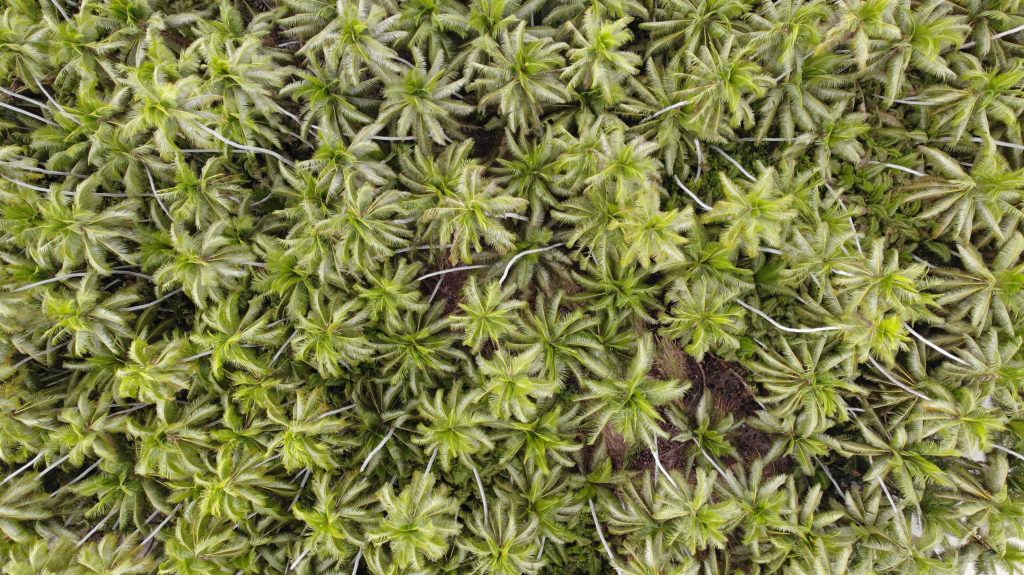



Appreciate the article, and I love the film; thanks for including that. I’ll keep it on hand to help in the stress department…